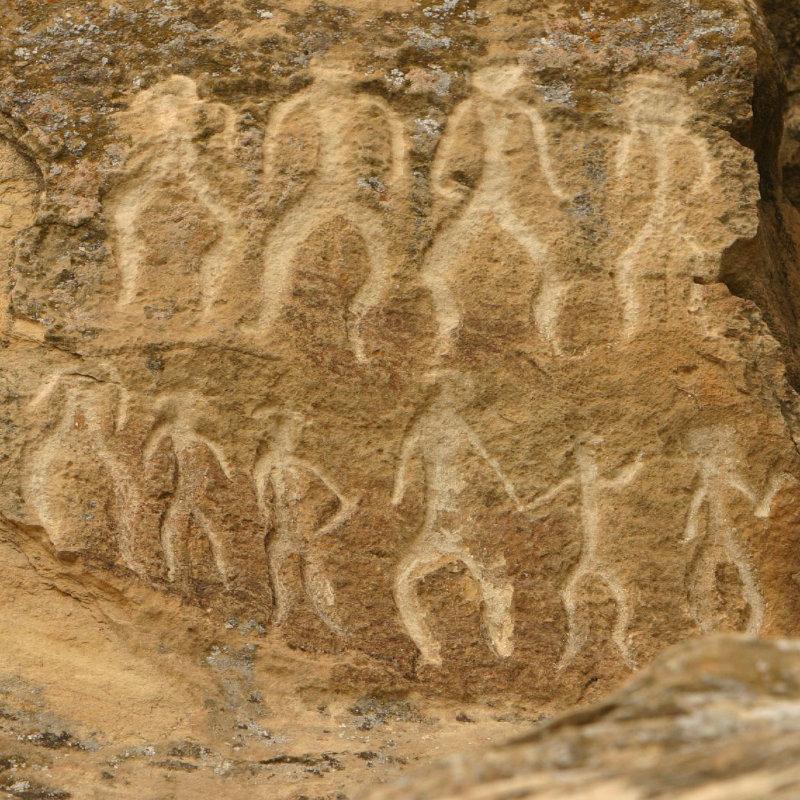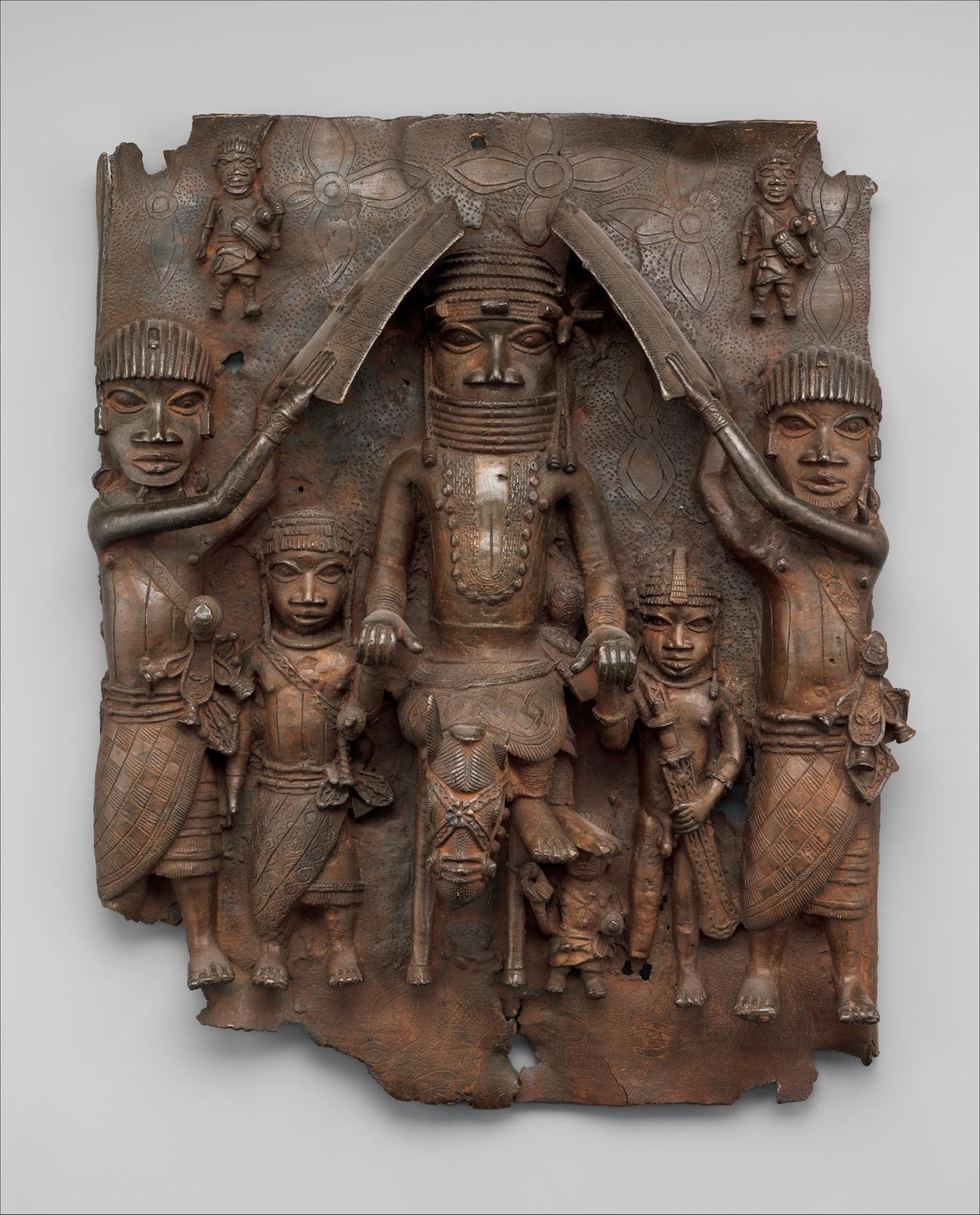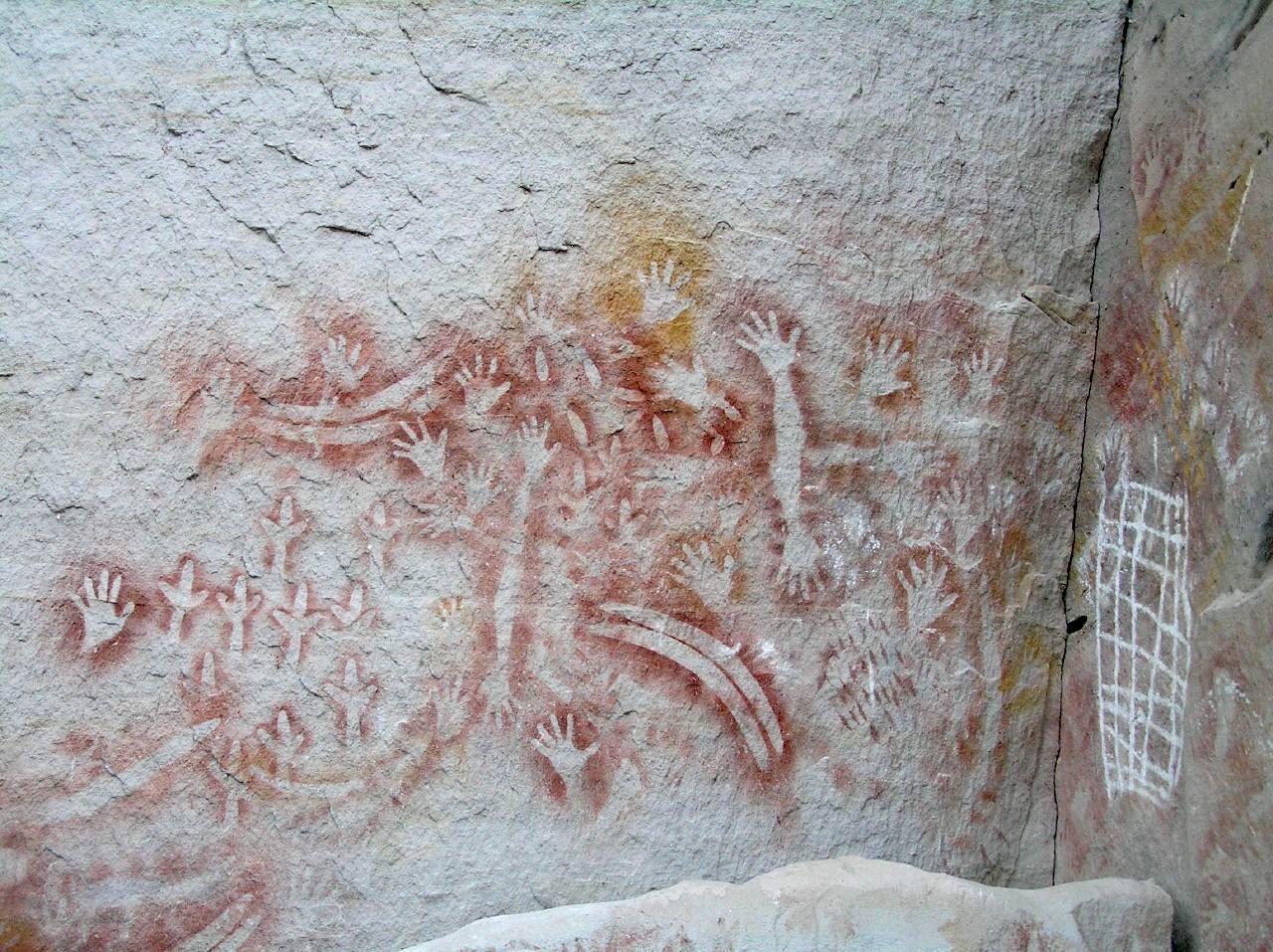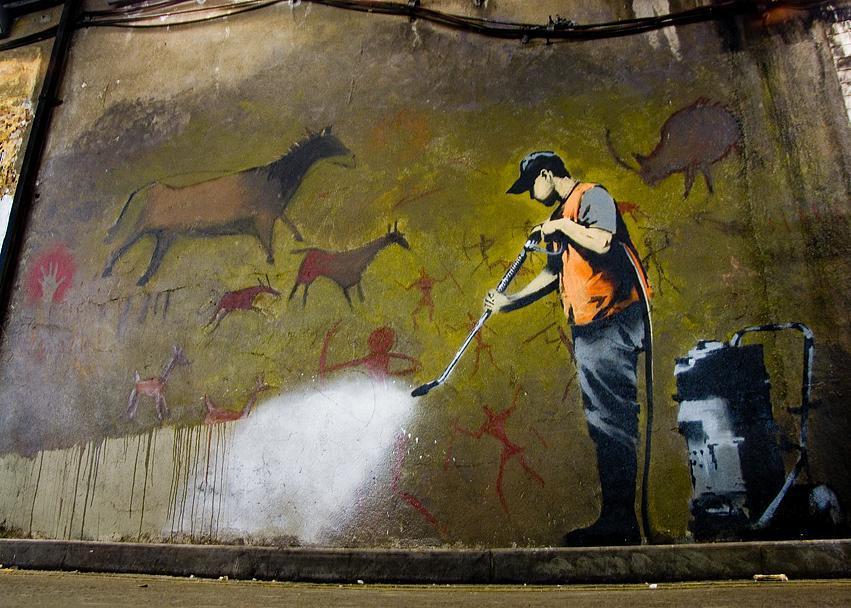Modern Human Art
Format: In-person or online

Rock art from 3000 years ago. What do you see?
Author: Dr. Keith Chan
Time needed: ~30 minutes
Supplies Needed
- Photographs (attached) or Internet connection
- Student worksheet (attached)
Readings
- Chan. 2019. Chapter 12: Modern Homo sapiens. Explorations.
Introduction
This activity will guide students through examples of modern human art with a focus on prehistoric art as well as one current piece of art. The goal is to explore the cultural side of human life over time by inferring meaning from their media. Students will use their interpretations of the details in the art to build scientific hypotheses that can be tested with other types of research, such as by examining skeletal remains found in the same region or the material culture of the artists.
Steps
- Students could work individually or in teams.
- Part 1: Students view art pieces, either as part of the additional documents or in color online. They will then learn a little about each one.
- Part 2: Students will answer questions about each piece, leading to a guess about what it depicts and the purpose of its creation.
- Part 3: In order to think scientifically about the study of art, students will conclude the lab by developing ways to test their interpretation with more data. For example, if the piece looks like a hunting scene, what type of archaeological evidence would align with that view?
Review Questions
The results of this lab are ideal discussion topics. Here are some examples :
- For each piece: What does it show? How do you know?
- Why do you think the artist created the piece?
- How can researchers test hypotheses about the interpretation of each piece?
Adapting for Online Learning
Rank how adaptable to online learning this lab is:
Tips and Suggestions
Another way to do this lab in a face-to-face class would be to project the art from the web links and have the class work in tandem to complete the worksheets. Another option would be to use art of your choice or have students find the art.
References
Chan, Keith. 2019. “Chapter 12: Modern Homo sapiens.” Explorations: An Open Invitation to Biological Anthropology, edited by Beth Shook, Katie Nelson, Kelsie Aguilera, and Lara Braff. Arlington, VA: American Anthropological Association. http://explorations.americananthro.org/
Modern Human Art Worksheet
Part 1. Examples of Human Art
View five pieces of art, either with the attached materials or online. Some context is provided for each piece.
Part 2. Art Interpretation
For each art piece, answer the following questions on a separate document:
1. What objects, actions, or things appear in the artwork? What do you think is happening in the artwork? Specifically try to identify what is being depicted and describe the overall scene.
2. Why do you think the artist made this piece?
Part 3. Scientific Hypotheses
3. Make hypotheses to test your answers from Part Two. What kinds of evidence from subdisciplines of anthropology (i.e. cultural anthropology, archaeology, linguistic anthropology, and/or biological anthropology) could support your interpretation? For example, if you think the piece depicts warfare, archaeology could be used to look for artifacts matching the weapons that the artist drew or one might want to examine skeletons from that culture for injuries from these types of weapons. If the piece depicts an animal, what kind of evidence would show that it was based on a real organism? Get creative and think widely of where the evidence could come from. Look in the textbook for ways that researchers have studied culture and cultural remains.
Additional Images: Art Pieces
1. Petroglyph (rock art) found in the Nine-Mile Canyon, Utah (Catron, 2006). The piece is approximately the size of a couch.

2. Plaque cast in bronze from the Edo people of Nigeria. The date is from 1550 to 1680 (The Met, n.d.). It is just under 20 inches tall and would have been mounted on the wall of a building.

3. Rock art in Carnarvon National Park, Australia, attributed to aboriginal peoples (Pouliquin, 2004). Be sure to consider the grid to the right and the three-pronged shapes to the left in your interpretation. The hands are life size.

4. Petroglyph from Qobustan, Azerbaijan dating to between 1300 to 900 BC. The piece is around three feet high.

5. Graffiti by the mysterious contemporary artist Banksy. It was made in 2008 in a London tunnel where graffiti was allowed (Banksy, 2008). The figure is life size. Imagine viewing this piece without knowledge of the figure’s culture.


